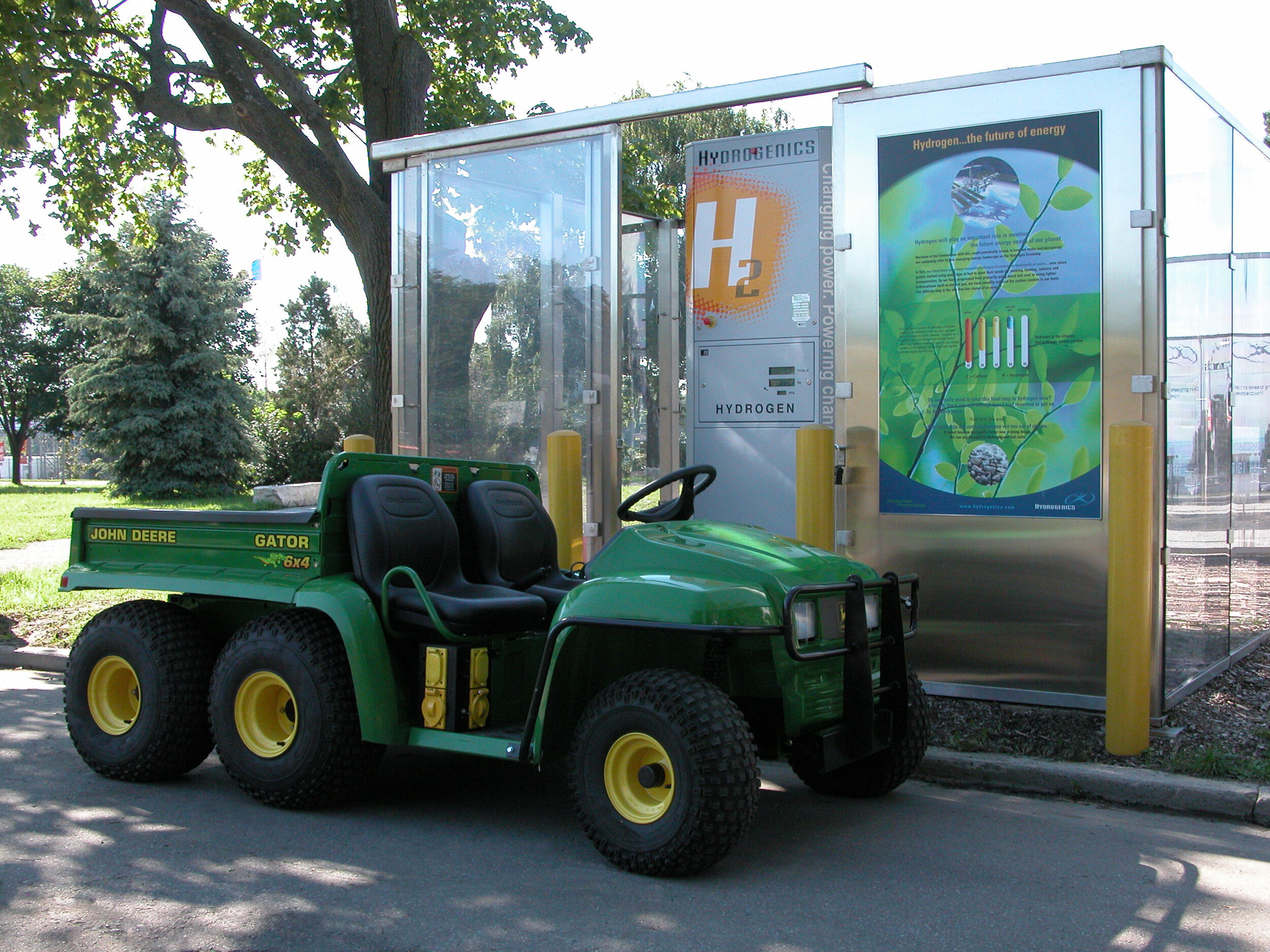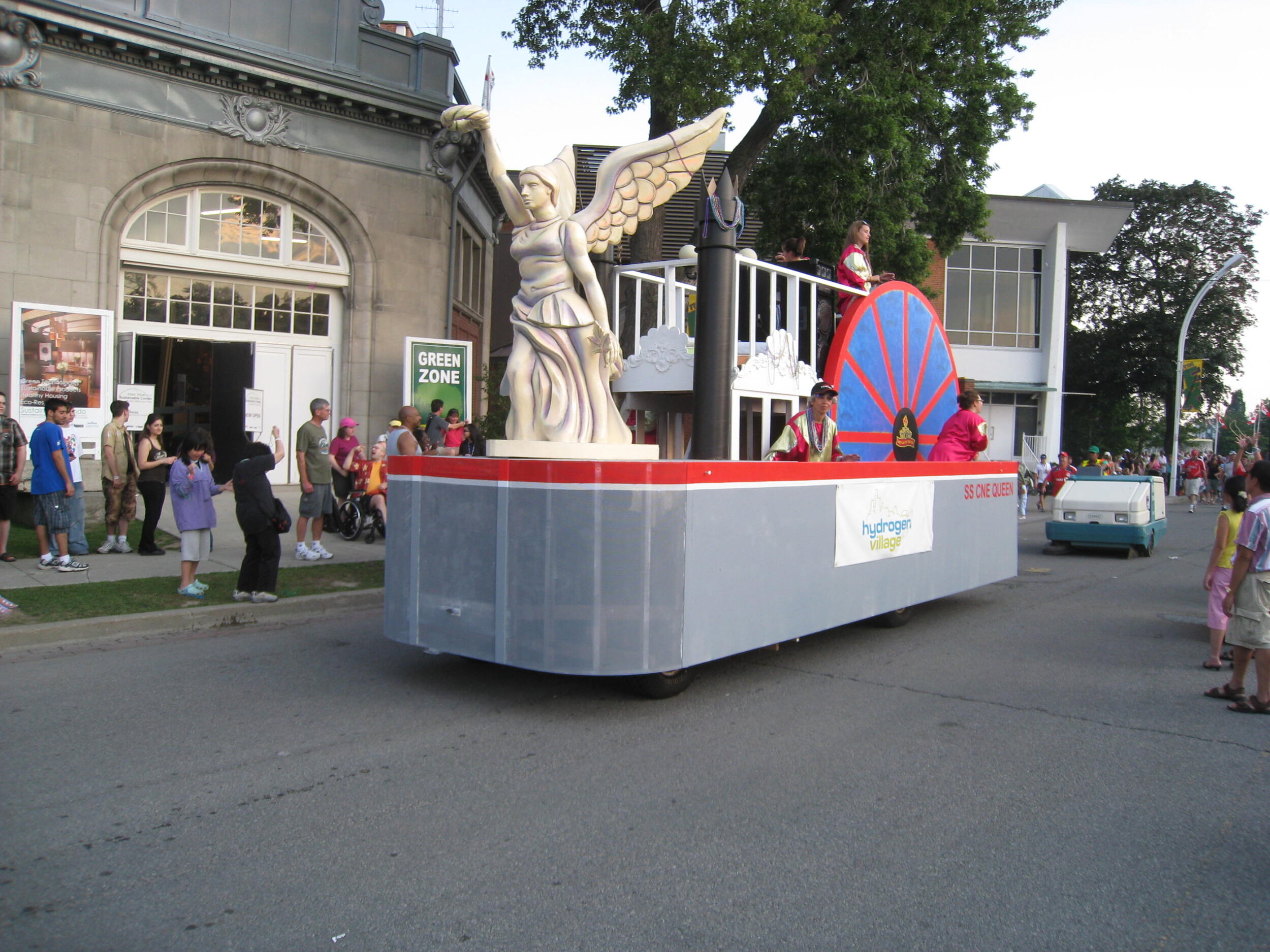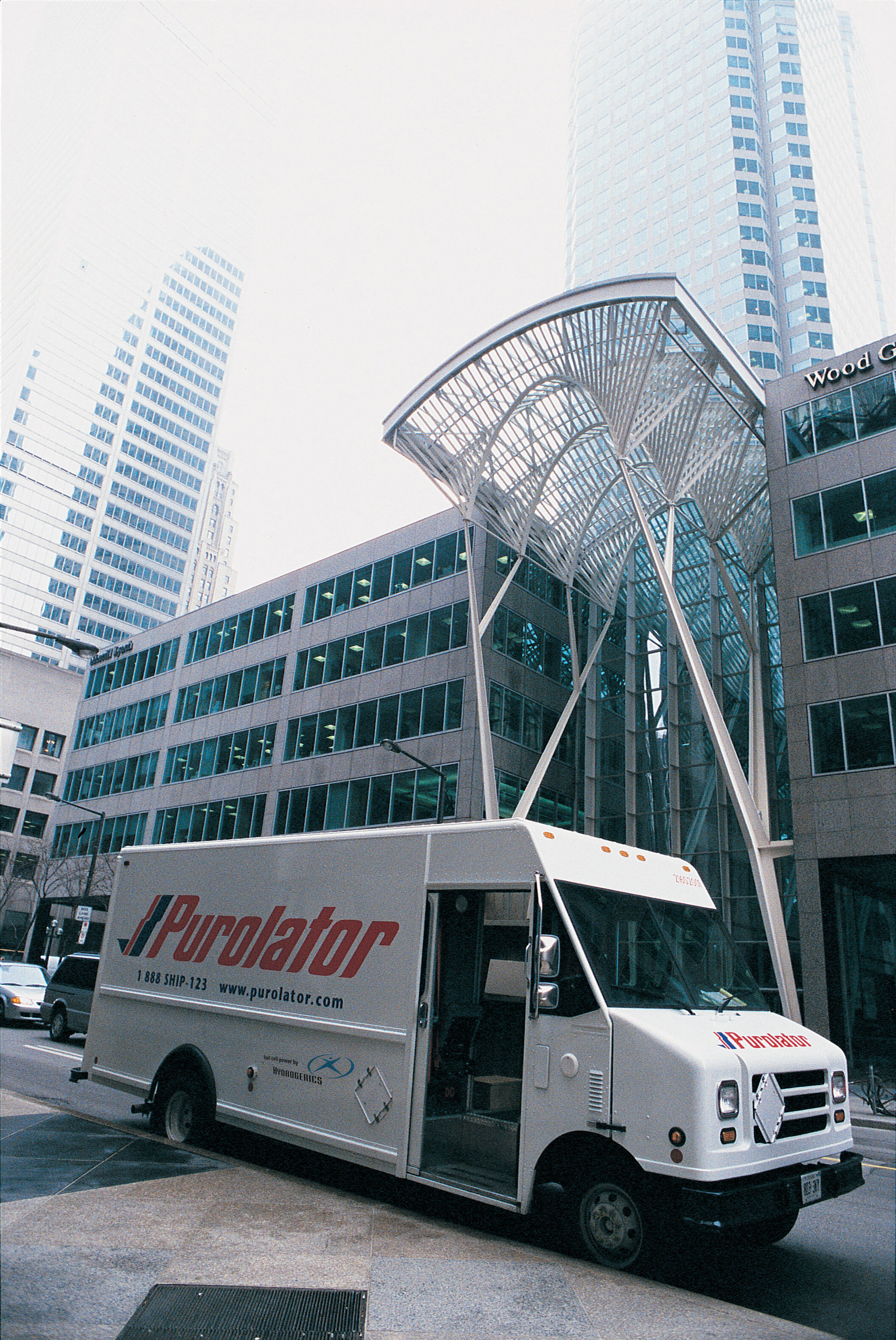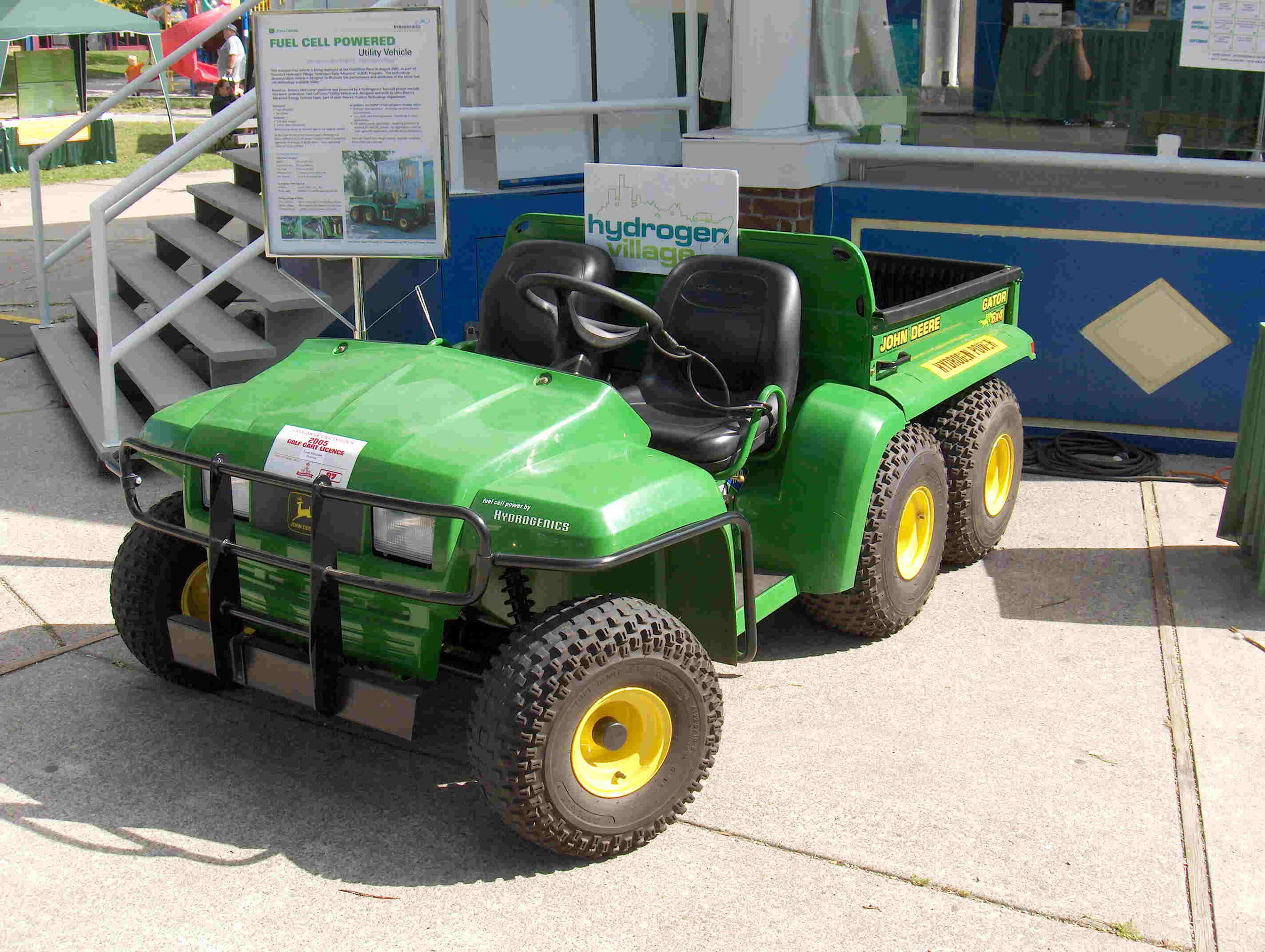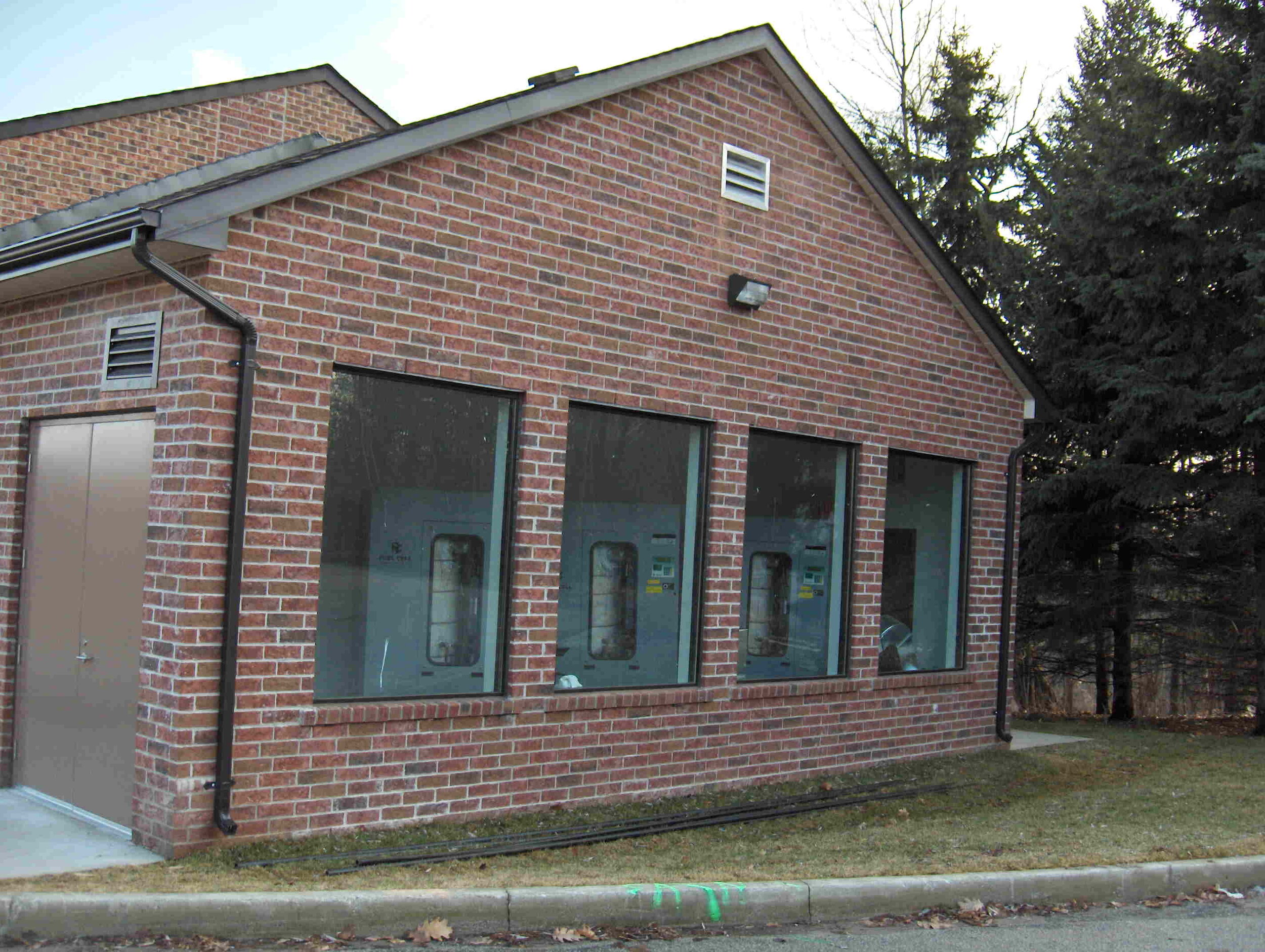Change Energy has applied its learnings in alternative vehicle fuels to develop efficient integrated networks and energy delivery solutions. Of particular note are:
Ramea Island– wind / diesel / hydrogen power to gas
Hydrogen Village and integrated community energy networks
Ramea Island
Ramea Island Wind/Diesel/H2 Power to Gas
Canadian National Exhibition Parade Float
H2 Village & Integrated Community Networks
Ramea Island Wind/Hydrogen Power to Gas
Problem: Ramea Island lies off the south coast of mainland Newfoundland and Labrador. Ramea is home to several hundred people who are provided with electricity by Newfoundland and Labrador Hydro (NLH), a Nalcor Energy Company. Historically, diesel generators were the only means of producing electricity. In an effort to reduce the dependance on diesel and to explore similar opportunities in other remote communities, NLH undertook a demonstration project to harvest some of the considerable wind energy available on Ramea. A wind farm was constructed adjacent to the diesel generating plant to demonstrate that a wind/diesel power plant could support the electricity needs of the community. Subsequently, in 2008, NLH initiated a project to demonstrate electric energy storage using hydrogen as the storage medium, and thereby building one of the first hydrogen “Power to Gas” systems in Canada.
Solution: As Subject Matter Experts and Owner’s Engineers we designed the entire integrated system. A “marine hardened” water electrolysis plant powered by wind, combined with a three vessel tank farm to store 120 kilograms of gaseous hydrogen which in turn provided fuel to power a 250 kW generator.
Electrolyzer
Hydrogenics Hy-Stat A-30
Capacity: 20 cubic meters per hour
Delivery pressure: 25 barg
Storage
Steelfab Industries
3 x 28,000 water litres
Settled pressure: 17 barg
Capacity: 120kg (total)
H2 ICE Genset
Hydrogen Engine Centor
5 generators at 65Kw each
Ramea Island. Retrieved from: The Globe and Mail
Ramea Island
Retrieved from: Wikimedia Commons
Hydrogen Village & Integrated Community Networks
Hydrogen Village was an end user-driven program aimed at accelerating the development of sustainable markets for hydrogen and fuel cell technologies. It was not a single place but a program for developing applications for Hydrogen and Fuel Cell technologies throughout the Greater Toronto Area (GTA). A single “bricks and mortar” village has the danger of becoming a “science project” rather than part of the community. On the other hand deployments spread thinly throughout the community do not create sufficient visibility. The GTA Hydrogen Village created “clusters of activity” in diverse locations throughout the GTA tied together under one umbrella organization. This maximized opportunities for outreach and awareness while at the same time placing projects in people’s day-to-day lives – where they live, work, and play.
Created in 2005, it was a collaborative public-private partnership of more than 35 companies with the purpose to promote early market development opportunities for hydrogen and fuel cell technologies.
Projects
Initial hydrogen deployment projects with: Exhibition Place Station, Exhibition Place Gators, Forklifts, Bell UPS, ISP Backup power, SOFC at UTM residences, Purolator delivery van and station
Hydrogen Float for Exhibition Place – UOIT, ATW, OCE
Liquid Hydrogen Vehicles and Fuelling Station – BMW, HyFI
H2 ICE shuttle buses and H2 refuelling station – Toronto, Ford, HyFI
19 FC Forklifts all delivered to GM Oshawa
Enbridge 2.2 MW generating facility

